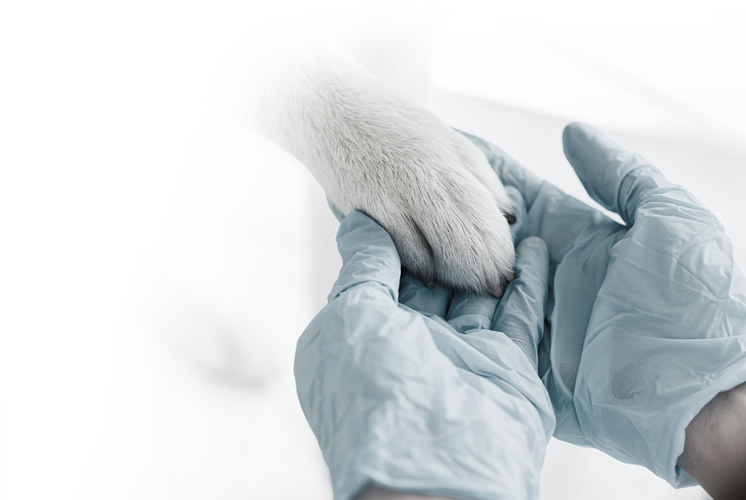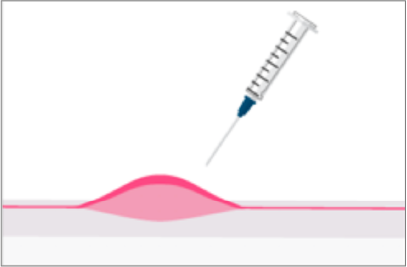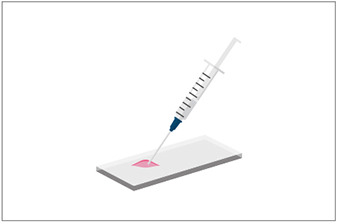
About mast cell tumours
Mast cell tumours are the most common cutaneous tumours in dogsWithrow, S.J. and Vail, D.M. Small Animal Clinical Oncology, Elsevier Inc, Canada 402-421, 2007.Welle MM, et al. Veterinary Dermatology 2008;19:321–339.McNeil EA, et al. Veterinary and Comparative Oncology 2006;4:2–28.Murphy S, et al. Veterinary Record. 2006;158(9):287–291.
Mast cell tumours (MCTs) are a cancer of mast cells. Mast cells arise in the bone marrow, travelling to sites to mediate an inflammatory response by releasing granules of histamine and heparin. It is not known exactly why mast cells form MCTs, but it happens often enough for this to be the most common form of cutaneous cancer in dogs.
![]() The average number of dogs with MCTs UK veterinary surgeons see per year (N=302)Data on file, KG Marketsense 2016.
The average number of dogs with MCTs UK veterinary surgeons see per year (N=302)Data on file, KG Marketsense 2016.Primarily a disease of older dogsGarrett L. Veterinary Medicine Research and Reports 2014;5:49-58.
Up to 21% cutaneous cancers are MCTsWithrow, S.J. and Vail, D.M. Small Animal Clinical Oncology, Elsevier Inc, Canada 402-421, 2007.Garrett L. Veterinary Medicine Research and Reports 2014;5:49-58.
The age when incidence of MCTs is highest – although they can develop at any ageSmiech A, et al. Journal of Veterinary Research 2019;63:141–48.
Some breeds are more likely to develop MCTs than others:Smiech A, et al. Journal of Veterinary Research 2019;63:141–48.Shoop SJ, Marlow S, Church DB, et al. Prevalence and risk factors for mast cell tumours in dogs in England. Canine Genet Epidemiol. 2015; 2:1.
- Pugs
- Boxers
- Staffordshire Bull Terriers
- French Bulldogs
- Labrador Retrievers
- Golden Retrievers
Mast cell tumours are a heterogeneous type of skin cancerBergman, P. J. Canine Mast Cell Tumours: Margins, Markers, and Prognostic Factors.
CVC in Kansas City Proceedings (2010).
- Variable appearance: slow or fast growing, hairless or covered in hair, red, swollen and sometimes ulceratedBergman, P. J. Canine Mast Cell Tumours: Margins, Markers, and Prognostic Factors.
CVC in Kansas City Proceedings (2010).American College of Veterinary Internal Medicine. Available at: http://www.acvim.org/Portals/0/PDF/Animal%20Owner%20Fact%20Sheets/Oncology/Mast%20Cell%20Tumors.pdf - Symptoms or symptomless: inappetence, nausea, vomiting and dark stools can occurBergman, P. J. Canine Mast Cell Tumours: Margins, Markers, and Prognostic Factors.
CVC in Kansas City Proceedings (2010).
A Fine Needle Aspirate allows you to identify and grade a mast cell tumour for treatment with STELFONTA®Camus, M.S., Priest, H.L., Koehler, J.W., Driskell, E.A., Rakich, P.M., Ilha, M.R. and Krimer, P.M. Cytologic Criteria for Mast Cell Tumour Grading in Dogs With Evaluation of Clinical Outcome. Veterinary Pathology 2016; 53: 1117-1123.


Cytological grading is a relatively new technique that uses a fine needle aspirate sample for grading, making it easier and more time-efficient than histological grading. This technique reports a HIGH or LOW grade for the tumour, based on the criteria similar to the 2-tiered Kiupel histopathological system.Camus, M.S., Priest, H.L., Koehler, J.W., Driskell, E.A., Rakich, P.M., Ilha, M.R. and Krimer, P.M. Cytologic Criteria for Mast Cell Tumour Grading in Dogs With Evaluation of Clinical Outcome. Veterinary Pathology 2016; 53: 1117-1123.
Not all mast cell tumours are resectable
Factors that can make a mast cell tumour non-resectable:
- LocationLowe R, et al. Veterinary and Comparative Oncology 2017;15(3):775–84.
-
- Cosmetic and/or functional compromise
- Ability to close the wound
- PathologyKiupel M and Camus M, Veterinary Clinics: Small Animal Practice 2019;49:819–36.
-
- Oedema, reactive stromal cells and inflammatory cells make determination of the surgical margins difficult
- Size of the tumourMonteiro B, et al. Canadian Veterinary Journal 2001;52:1209-1214.
-
- 1.4% increase in incomplete excision per cm3
- Body weightMonteiro B, et al. Canadian Veterinary Journal 2001;52:1209-1214.
-
- Decreased body weight is a risk factor for incomplete excision
- General anaesthesiaBrodbelt D, Veterinary Journal 2009;182(2):152–61.
-
- Older dogs with comorbidities have higher anaesthesia risk
- Some breeds (brachycephalic) have higher anaesthesia risk
- Client choice and preference
-
- Preference to avoid surgery and surgical aftercare






